David in Korea
In Perth, our cat Ellie bade me "Bon Voyage".

Ellie
I flew from Perth to Seoul, Korea, via Kuala Lumpur. Seoul's airport is at Incheon, on the west coast, and is a very good airport, everything seems to go very smoothly. I caught a bus into Seoul Centre to see something of the buildings and countryside, though I could have gone by the Metro -- Seoul has perhaps the most extensive metro network in the world.
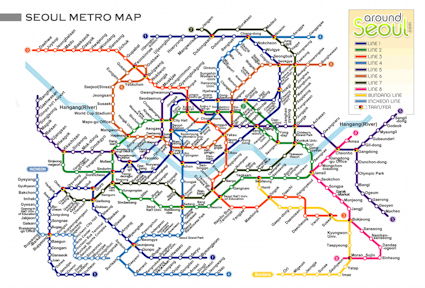
The Seoul metro network
The bus delivered me to the old central railway station, now replaced by a gleaming new station next door. Most of central Seoul is ultra-modern, great glass-faced buildings. These lie east of the station.
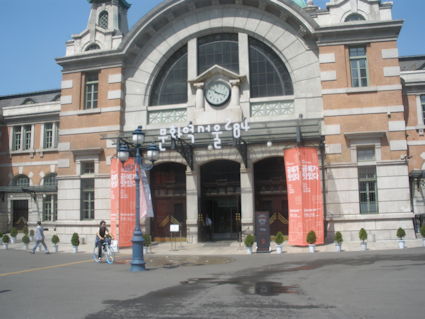
The old railway station, Seoul
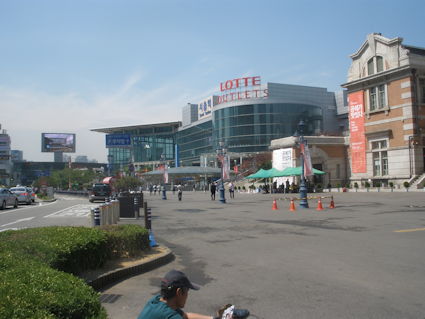
Seoul -- the new Central Station
After checking in to my hotel, I got the staff to book me a trip to the DMZ for the next day. The DMZ, De-Militarized Zone, is a strip on the border with North Korea, still monitored by the United Nations. You needed your passport to visit it.
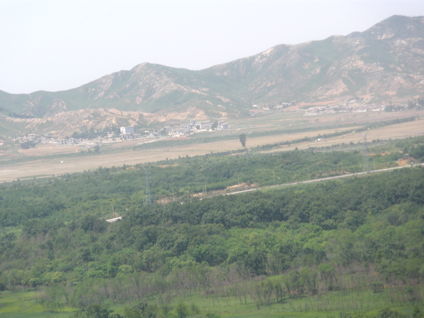
View from the DMZ across to the nearby North Korean town
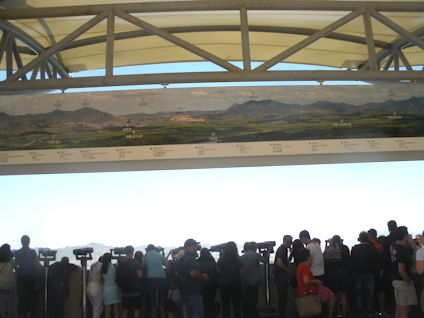
One of the viewing stations, heavily visited from the South
The trip visited one of the sites where one of the invasion tunnels dug by the North Korean government had been detected. You could walk down a steep slope to the actual tunnel, 73 metres below ground. Several concrete barriers prevented entry into the North.
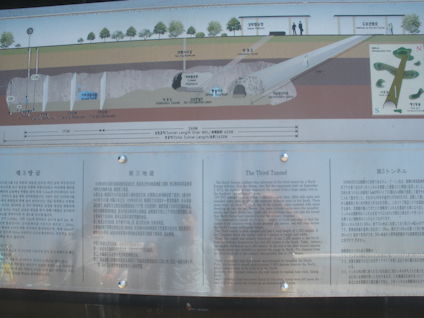
Diagram of the Third Tunnel setup
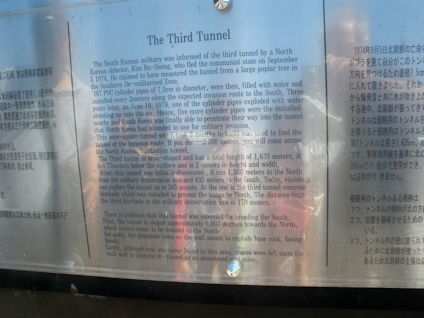
Writeup on the Third Tunnel
It was said that this tunnel could have delivered 60,000 troops per hour from the North into the South.
Civilian casualties were high in the Korean War, and for years after the Ceasefire, civilians trying to escape the North (or encountering minefields left behind) suffered injury. In the older part of Seoul, shops stocked with prosthetic limbs could be seen.
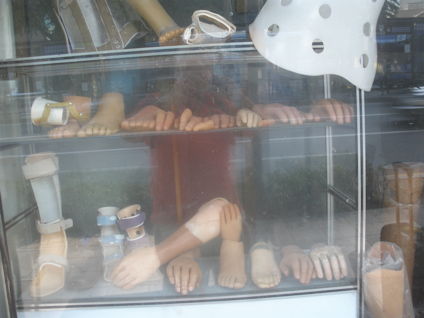
Spare parts shop in Seoul
While in Korea, I wanted to visit Busan, the major port (and second largest town) in the southeast of the country. I booked a return ticket on the Busan Bullet Train. The railway network is, of course, very efficient.
To enable movement of very large ships, and because it is partly built on islands, there were many spectacular bridges in Busan. I saw some of them with a visitors' bus tour.
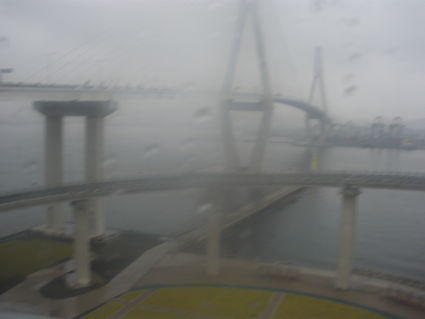
Busan bridges in the storm
In Busan, I ordered fish and chips in a restaurant. I was surprised when the fish arrived covered in a black layer, like sushi wrapping.
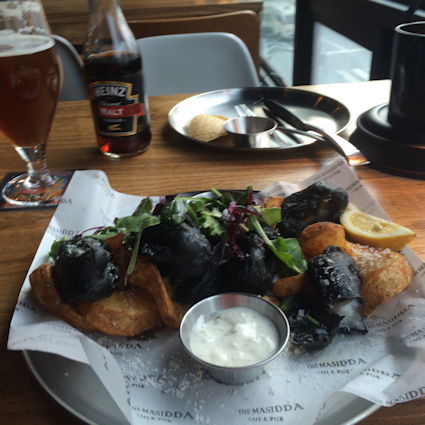
Busan fish and chips
In my Busan hotel, I had a problem on arrival -- I couldn't find the room light switches. The Desk staff told me that the light switches were on the remote control, like everything else.
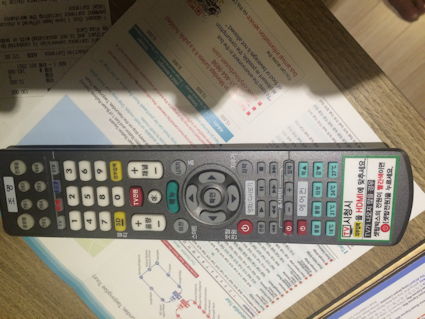
The remote
In fact, the remote controlled television, cable TV, and air-conditioning, as well. As it was covered in Korean script, it was not easy to figure out.
Korean script is almost phonetic. Called Hangul, it is the native script of Korea and was created on logical principles from scratch in the mid fifteenth century, under King Sejong. Traffic signs in Korea are often written in English and in Chinese characters, as well as in Hangul.
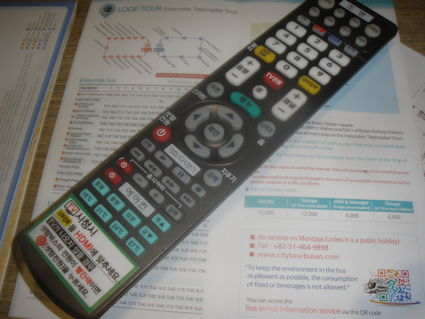
Another view
From Busan, I caught a Bullet Train back to Seoul. Of course the train had Wi-Fi, so it was interesting to use a map app and follow your progress with this. You could see where you were nearing a bridge or town, and just when it would swing into view.
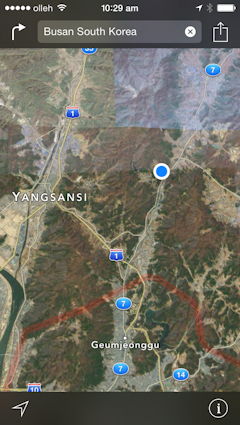
Watching your movements on an iPhone
The Korean countryside is mostly green undulating hills, nothing like you might imagine from the TV show M*A*S*H. Most flat spaces were either built on, or covered with plastic greenhouses -- some floating on water.

Hills and greenhouses
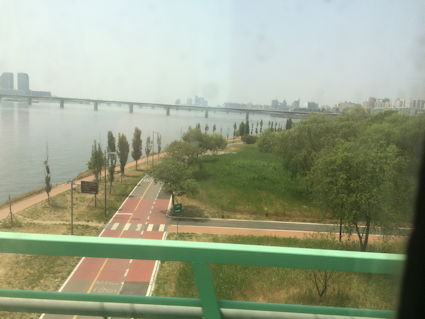
Seoul sits on a wide river, and has many bridges
Back in Seoul, I had booked myself into an airbnb unit for my last night in Korea. It was a tiny, unattended flat, but very well equipped. It lay in a very steep area just to the west of the Central Station.
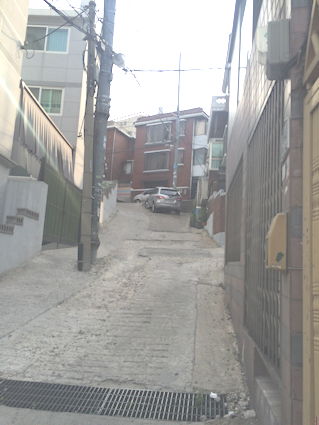
Steep path up to the airbnb
To get to the flat, I had the owner's phone number, and he guided me by phone live from the station ("Have you got to the service station? Turn right just past the food shop, and climb the hill ... the key is inside..."). The airbnb charge was only $49, but when I returned to Australia, I found the phone call had cost $70. The Wi-Fi password was written on the corridor wall.
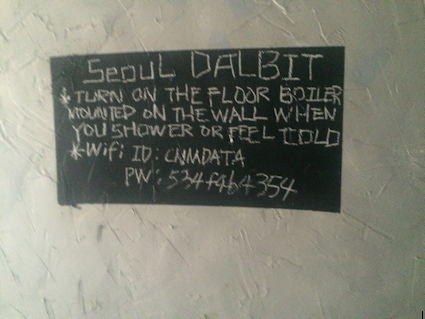
Getting the Wi-Fi password
The next day, I caught the Airport Express to Incheon. The metro network does go to the Airport, but the Express is a separate, non-stop line straight from the central station into the airport terminal, fast and cheap. I noticed that this line was seven levels below street level -- the Koreans are very good with tunnels.
Go to the 2015 website
Last update 2015 Dec 23



















